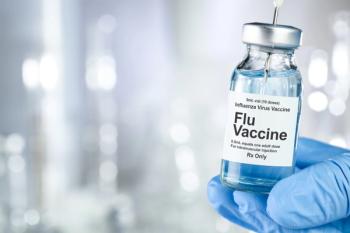
Rates of Hepatitis C Coinfection in Patients With HIV
For patients with HIV, liver disease is a major cause of morbidity and mortality.
A new analysis suggests there’s a need for frequent testing after the hepatitis C virus (HCV) has been cleared. Data from 3 European countries and the United Kingdom indicate a rise in reinfection of acute HCV among men with HIV who have sex with men (MSM).
Moderate cure rates of acute HCV have been reported in the last decade among MSM and also are infected with HIV. However, many who either clear the infection spontaneously or through treatment are later re-infected, researchers noted.
“With a high treatment uptake in this population even in the interferon era and with higher response rates to treatment in the acute phase of infection, reinfections are most likely occurring due to maintained risk behaviors,” the study authors wrote in the Journal of Hepatology.
Chronic infection of HCV can lead to cirrhosis and other serious liver damage, including liver cancer. The authors pointed out that for patients with HIV, liver disease is a major cause of morbidity and mortality.
The research team examined more than a decade of data on patients with a documented cure of acute HCV between 2002 and 2014. It included data from 8 centers in Austria, France, Germany, and the UK, which are part of the NEAT consortium (European AIDS Treatment Network).
Information gathered for the analysis included age, genotype, diagnosis date, as well as the date of cure and whether it was from treatment or spontaneous clearance of the HCV and the date of last follow-up visit.
Among the 606 patients, 494 men (81.5%) had achieved sustained virologic response—indicating a cure—after being treated for the virus with pegylated interferon and ribavirin. One hundred and eleven men (18.3%) cleared the virus spontaneously.
Documentation and details were lacking for the remaining patient. Results showed that 149 of 606 men (24.6%) later presented with subsequent HCV infection. In some cases, patients became reinfected for a second, third, or fourth time.
“Thirty out of 70 (43%) who cleared again or were successfully treated, presented with a second reinfection, 5 with a third, and 1 with a fourth reinfection,” wrote lead author, Patrick Ingiliz, MD, of the Center for Infectiology in Berlin, Germany, and colleagues. “The reinfection incidence was 7.3/100 person-years (95% CI 6.2—8.6).”
The authors found the incidence of reinfection “alarming” and noted that the study findings underline a need for intervention during follow-up care after a patient is cured of HCV. They recommended prevention strategies such as testing for reinfection of HCV every 3 to 6 months among this high-risk group.
“Prevention strategies — both treatment and behavioral – are needed to target high risk groups to reduce morbidity and treatment costs,” the team concluded. “Patients as well as clinicians have to be aware of the specific risk behavior in this setting and counseling should be accompanied by behavioral interventions to avoid reinfections.”
The study, “HCV reinfection incidence and spontaneous clearance rates in HIV-positive men who have sex with men in Western Europe” appears in the February issue of the Journal of Hepatology.
Newsletter
Stay informed on drug updates, treatment guidelines, and pharmacy practice trends—subscribe to Pharmacy Times for weekly clinical insights.




















































































































































































































